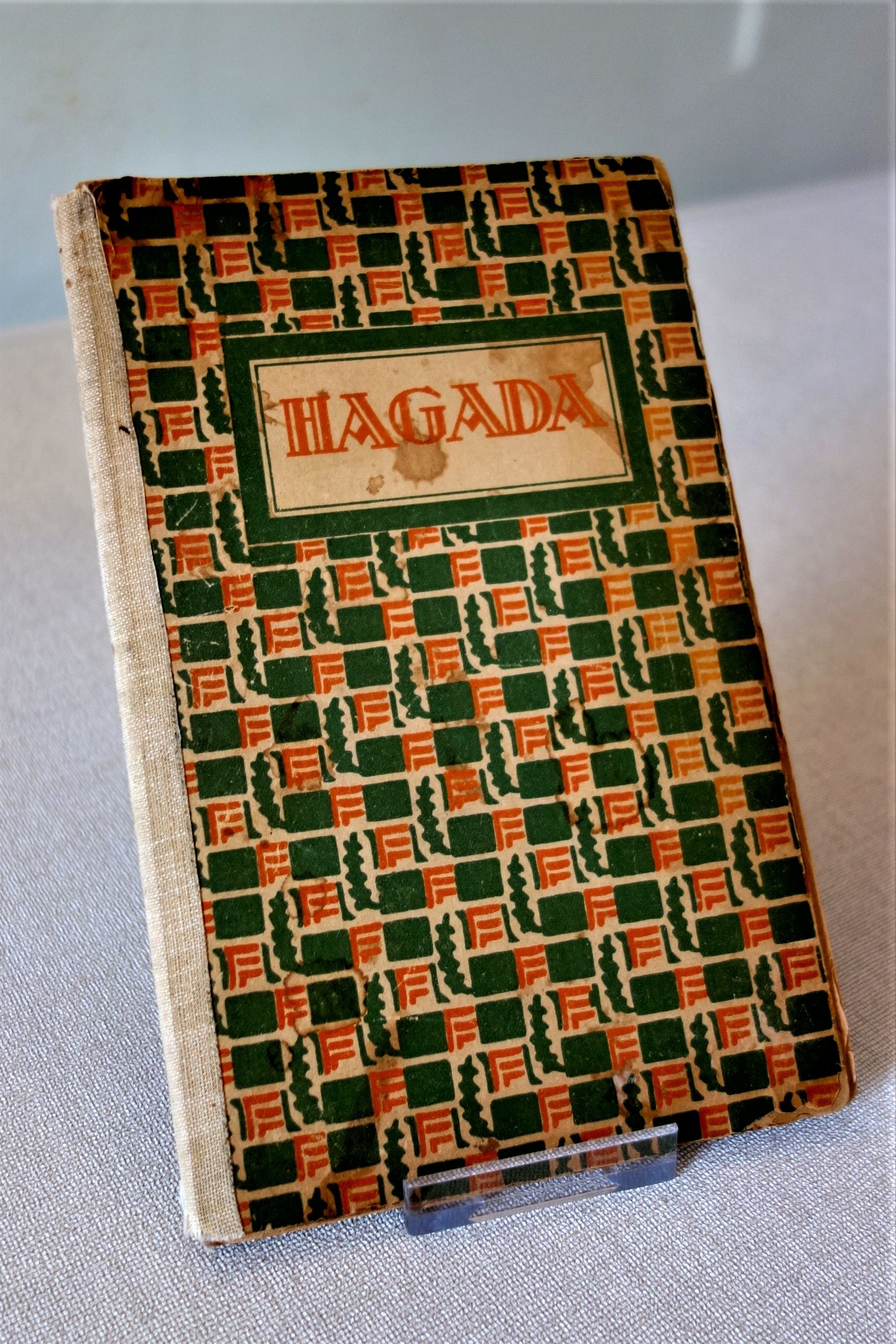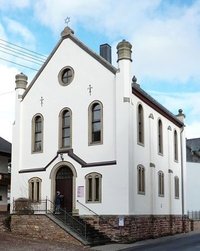The Haggadah is a richly illustrated book with stories for reading at the Seder table, at the beginning of the week-long Passover festival. The stories relate the events found in the book of Exodus about the times of slavery and the flight of the Jews to freedom. The Haggadah provides precise instructions for prayer and song for the long Seder evening and the feast (Seder means order). Passover is not celebrated in the synagogue, but is commonly celebrated at home instead. This is why the Heymann family from Kirchberg had their own small Hagaddah, which would be taken out for the Passover festival with the stories being shared aloud among family members. This plain book is printed in the Hebrew language with German translation; the cardboard binding is decorated with a geometric pattern of grain-like forms in green and orange.
The Heymann family built a residential and commercial house on the Kappeler Straße in Kirchberg in 1924/25. The brothers, David and Max, operated a „department store“ that carried textiles, woollens, bedsprings and „complete“ beds. On the 12th of August 1935, however, a decree was issued to all community councils in the administrative district of Simmern, prohibiting commercial dealings with Jewish businesses. After half a year of disfranchisement and discrimination, the Heymann family could no longer see a future for themselves in Germany. Max Heymann, his wife and both sons, Rudolf and Harry, officially departed Kirchberg and moved to the Horst-Wessel-Straße in Cologne. from where they were able to flee to the USA where David and his family had already found refuge.
Upon graduating high school, Harry Heymann was drafted into the U.S. Army and was sent back to Germany as a young American soldier immediately following the war. To his family’s dismay, he chose to stay. Over time, he enjoyed great demand as an actor and founded the pantomime theatre „Die Gaukler“ (The Jesters) in Stuttgart. In 1982, he co-directed the autobiographical film „Regentropfen“ (Raindrops) in Kirchberg, in which the character, Bennie Goldbachs, tells of his childhood in the small town up to his emigration; in his novel „Einmal Exil und Zurück“ (Once in Exile but Back Again), published in 2005, he portrays his own life’s story.
Harry Raymon visited his old hometown on the occasion of the laying of the first stumbling blocks in Kirchberg in 2017. Since that time, a small plaque also commemorates Harry and his family in front of their home and store. Shortly before this, he found this Passover Haggadah in his archives and subsequently conveyed it to the “Förderkreis” of Synagogue Laufersweiler.
en

